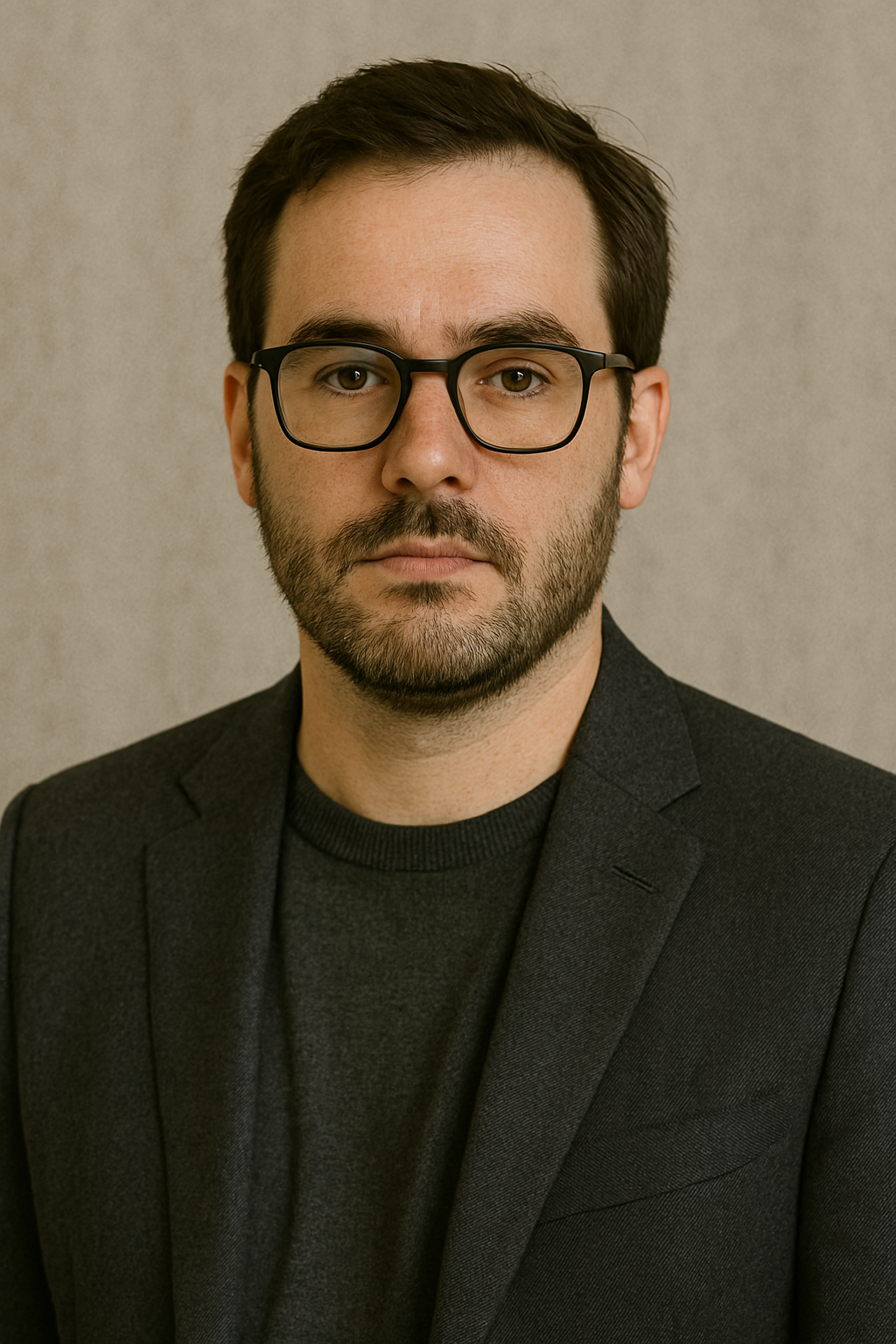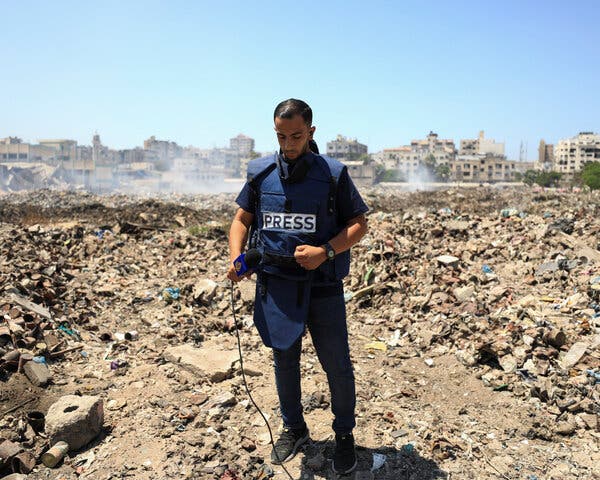Eleven days ago, Israel carried out an airstrike that killed Anas al-Sharif, a Pulitzer Prize-winning journalist who had emerged as a powerful voice for the people of Gaza during the ongoing conflict.
Al-Sharif’s compelling reports on Al Jazeera and social media vividly conveyed the harsh realities faced by Gaza’s civilians under relentless Israeli attacks. At just 28 years old, he was a husband and father of two, killed alongside four Al Jazeera colleagues and at least one freelance journalist in a strike targeting a press tent near a Gaza City hospital.
The Israeli military openly acknowledged the strike, asserting without credible proof that al-Sharif was a Hamas commander using journalism as a cover. Those who died with him — Mohammed Qreiqeh, Ibrahim Zaher, Mohammed Noufal, Moamen Aliwa, and Mohammad al-Khaldi — were deemed collateral damage in this operation.
Since the brutal Hamas attack on Israel on October 7, which claimed approximately 1,200 Israeli lives, Israel has launched an uncompromising military campaign in Gaza. Local health authorities report over 62,000 fatalities, including nearly 18,500 children, figures widely believed to underestimate the true toll. Most of Gaza’s two million residents have been displaced multiple times as widespread destruction has turned much of the territory to rubble. Following the cessation of the cease-fire in March, humanitarian aid has been severely restricted, leaving the population facing widespread starvation according to United Nations assessments.
While the death of a single journalist might seem a personal tragedy amid such devastation, al-Sharif’s killing—alongside the earlier death of fellow Al Jazeera correspondent Hossam Shabat—signals a troubling escalation as Israel prepares for an intensified offensive aimed at capturing Gaza City and potentially occupying the entire enclave.
Israel justifies its harsh military actions by alleging that Hamas operatives are embedded within civilian infrastructures such as schools, hospitals, and mosques. This justification has evolved into openly accusing journalists of militant affiliations and admitting to targeting them, often relying on unverifiable evidence.
With Gaza effectively sealed off from international media, this strategy appears designed to silence the remaining journalists capable of bearing witness, deterring others from stepping into their roles. It reflects a disturbing logic: if Hamas is everywhere, then all Gazans are suspect. This conflict is increasingly unrestrained, and the dwindling presence of journalists threatens to obscure its grim realities.
Having witnessed the courage of journalists working in conflict zones, I am continually struck by the extraordinary bravery of those reporting from their own devastated homelands. Unlike foreign correspondents who can retreat to safety, local journalists remain immersed in the crisis, often at great personal risk.
Mohammed Mhawish, a young Gaza City journalist who transitioned from aspiring artist to reporter for Al Jazeera English, described his own sense of duty to document the destruction of his community in real time. He recalled his close friend al-Sharif as a courageous young man who previously covered everyday life and cultural stories, never intending to carry the heavy burden of representing his people amid war.
The psychological toll on al-Sharif was immense. Mhawish recounted how his colleague frequently expressed exhaustion, hunger, and fear, aware he was being watched and targeted.
International law classifies journalists as civilians, yet since the conflict began, at least 192 journalists have been killed. Mhawish revealed that the protective press vest he once relied on had become a liability, effectively making him a target.
Al-Sharif’s death, after enduring repeated threats, was a devastating loss for Gaza’s journalistic community. Mhawish expressed profound grief over losing so many colleagues in the line of duty.
While global outrage followed the assassination of Saudi journalist Jamal Khashoggi and the killing of journalists in Russia, the response to Palestinian journalists’ deaths has been markedly muted. Many news outlets have echoed Israeli claims that al-Sharif was a Hamas militant, despite a lack of verifiable evidence, a stance that deeply saddened those who knew him.
Foreign correspondents often view local journalists as essential partners, benefiting from their deep knowledge and connections. However, local reporters are frequently viewed with suspicion, accused of bias due to their personal experiences and allegiances within their communities.
This dynamic complicates perceptions of journalistic neutrality, particularly in conflict zones where local reporters endure the same hardships as those they cover.
The documentary “2000 Meters to Andriivka” illustrates this tension through Ukrainian journalists embedded with soldiers during combat. The film’s director, Pulitzer and Oscar winner Mstyslav Chernov, reflects on the parallel roles of soldier and journalist—both fighting for their country’s dignity, albeit through different means. Were Chernov targeted or defamed, the global journalism community would likely unite in his defense.
Israel’s allegations against al-Sharif rest on weak evidence, including unverified documents and screenshots. The United Nations special rapporteur on freedom of expression has criticized such accusations as a pretext to justify the killing of journalists.
Before his death, al-Sharif spoke candidly about the dangers he faced, asserting that his critical coverage of Israeli actions made him a target, accused falsely of terrorism to undermine his credibility.
Even accepting Israel’s claims at face value—that al-Sharif had some affiliation with Hamas as a teenager—must be understood in context. Hamas has governed Gaza since 2006, operating a broad social network that includes many Palestinians unaffiliated with its military or political wings.
History shows numerous examples of combatants who later became war correspondents, such as George Orwell during the Spanish Civil War. Military experience can enrich journalistic insight, a fact recognized in many newsrooms.
While Hamas differs fundamentally from a state military and is designated a terrorist organization by many countries, it remains Gaza’s de facto authority.
Ironically, Hamas’s strength has been bolstered by policies of Israeli leaders who, until recently, tacitly supported the group as a counterbalance to the Palestinian Authority, even facilitating financial aid through intermediaries.
Journalists are driven by a deep curiosity and commitment to bearing witness to suffering that others might avoid. This role—though morally complex—is vital for documenting history and informing the world.
In many ways, journalists share a kinship with soldiers, undertaking dangerous missions on society’s behalf, often facing suspicion and scrutiny due to their proximity to conflict.
This mistrust is especially acute for local journalists, who are frequently branded as combatants despite the absence of weapons. Such accusations serve the interests of warring parties but should be met with skepticism.


0 Comments
No comments yet. Be the first to comment!